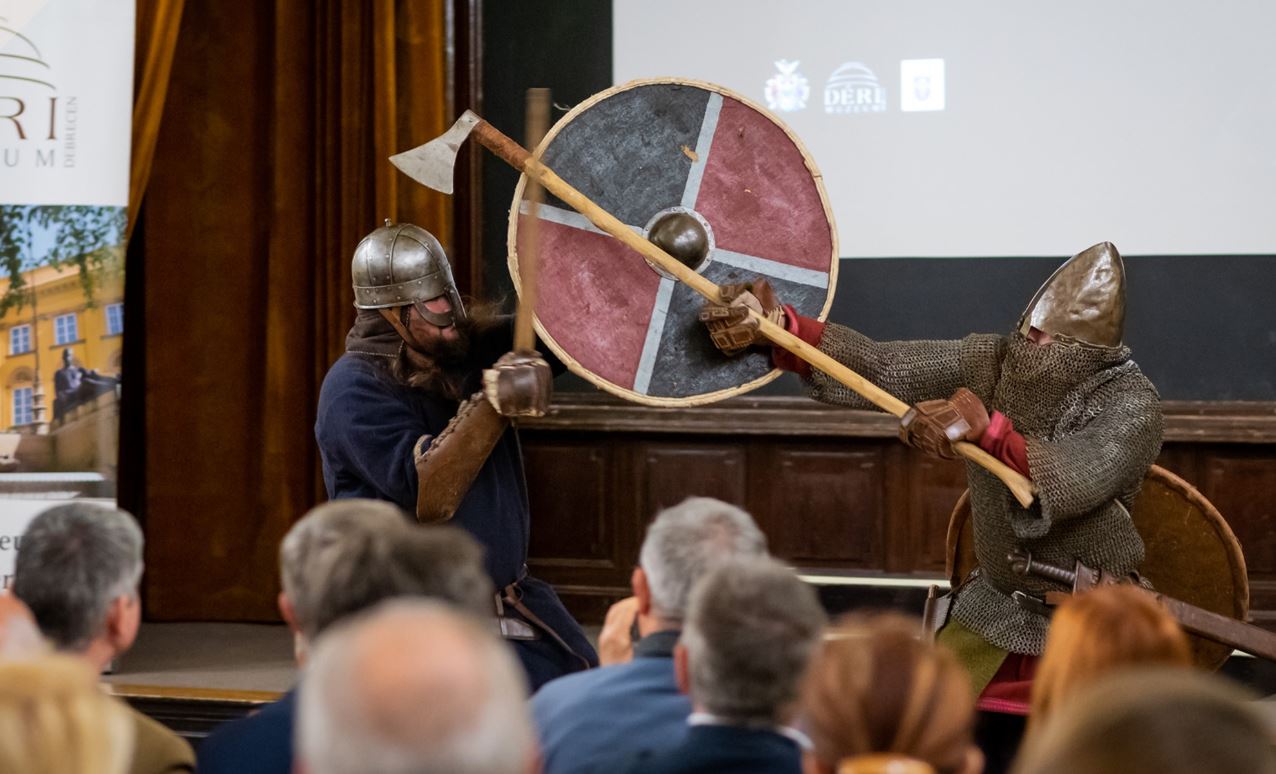Less than two years ago, the city of Debrecen inaugurated the statue of King Szent István on Dósa palatán tér. The contemporary work depicts the king with a spear in one hand and a sword in the other. Research has long established that this last item was a Viking weapon and it is rightly classified as a memorial to the former Hungarian king. However, Debrecen hides more treasures than this public statue, which are related to the early centuries of Hungarian history and the Vikings. The custodian of these treasures is the museum named after Frigyes Déri.
The early Russian helmet, which was once found in Nemija, survived world fires and regime changes and is still one of the rare reminders of the skill of medieval northern masters. In addition to the helmets, rich sites such as the 10th-11th century cemeteries in Püspökladány, Sárrétudvar, Hajdúszoboszló, and Ártánd have also helped the investigation of early Hungarian and Scandinavian relations. Without these sites, we would certainly know less about the early Hungarians and their network of connections across Europe. However, the Déri Museum not only saves and preserves these magnificent treasures but also provides an insight into them for those interested.
A good example of this is the exhibition that has just been held, where many outstanding collections of our country (19 loaning institutions in number!) have lent their treasures that were carefully guarded so that they can be displayed together with the antiquities of our region in the Déri Museum.
We can see with our own eyes everything that others think we can learn with the help of books, we can immerse ourselves in the beauty of the objects, we can think about what must have gone through the minds of those who made, wore and used these beautiful weapons, tools, and jewelry.
(The Vikings in the Carpathian Basin exhibition can be visited until May 7, 2023, in the Gallery and Dome of the Déri Museum.)
Photo: László Papp, Facebook

















